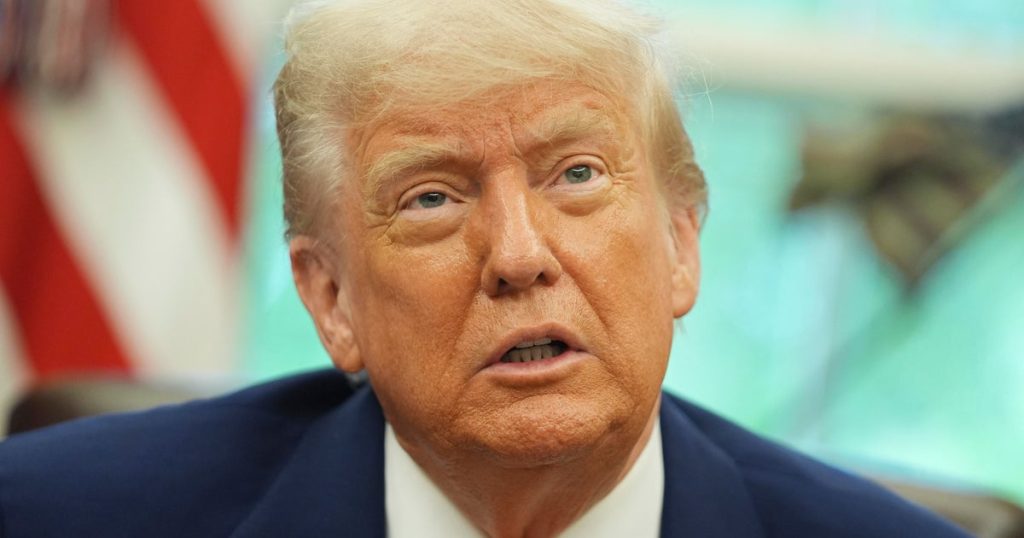In a significant move, President Trump has announced plans to sign an executive order aimed at reducing medication costs in the United States. The proposed measure, which will direct the U.S. Department of Health and Human Services to tie Medicare drug prices to the lowest prices paid by other countries, seeks to address escalating healthcare costs. This initiative is a revival of a previously attempted program from Trump’s first term, highlighting ongoing pressures surrounding the pharmaceutical industry and healthcare affordability.
| Article Subheadings |
|---|
| 1) The Executive Order Announcement |
| 2) Implications for Medicare and Drug Pricing |
| 3) Reactions from the Pharmaceutical Industry |
| 4) Historical Context of Drug Pricing Legislation |
| 5) Future Prospects for Healthcare Reform |
The Executive Order Announcement
On a recent Sunday, President Trump took to social media to outline his intent to sign an executive order during a White House event the following morning. He characterized the forthcoming measure as a “MOST FAVORED NATION’S POLICY,” promising that the U.S. would align its medication prices with those of the country charging the lowest rates. “Our Country will finally be treated fairly, and our citizens’ healthcare costs will be reduced by numbers never even thought of before,” he proclaimed.
This announcement revives an initiative that failed to materialize during his previous term, with promises of considerable reductions in healthcare expenditures. Trump’s commitment aims to address long-standing complaints from citizens about the high costs of medications, particularly for Medicare beneficiaries.
Implications for Medicare and Drug Pricing
Under the proposed executive order, the U.S. Department of Health and Human Services will be tasked with establishing a pricing model where payments made by Medicare for certain in-office administered drugs will reflect the lowest prices paid by other advanced economies. This model would primarily impact drugs covered under Medicare Part B, which serves roughly 70 millionolder Americans.
Critics and proponents alike view this proposal as a significant step toward tackling the expensive U.S. pharmaceutical market. The policy aims to create competitive pricing that aligns more closely with international standards, potentially yielding substantial savings for both the government and its beneficiaries.
Reactions from the Pharmaceutical Industry
Reactions from the pharmaceutical sector have been predictable, with industry players voicing strong opposition to the proposed measures. They argue that the plan could undermine their profitability and stifle innovation in drug development. The pharmaceutical industry has warned that imposing lower prices may lead to a decrease in investment in research and development.
Trump’s announcement comes amid claims that previous attempts to implement similar pricing structures faced resistance. For instance, during his first term, court rulings effectively blocked attempts to put similar executive orders into action, citing procedural missteps in the rulemaking processes. Critics fear that renewed efforts may encounter similar legal challenges.
Historical Context of Drug Pricing Legislation
The issue of drug pricing in the United States is not new, with lawmakers on both sides of the political aisle expressing concern over exorbitant costs. The proposed executive order has roots in the broader discourse on healthcare reform and has resurfaced as a hot topic as drug prices remain notoriously high compared to other wealthy nations. Observers note that consistent bipartisan frustration has consistently failed to yield a lasting solution.
The Trump administration’s previous attempts to establish a similar pricing system were marred by legal complications that led to abandonment of the proposal under the Biden administration. The historical context underscores the challenges and complexities of American healthcare policy, where proposed reforms often face scrutiny from various stakeholders, including lobbyists and industry representatives.
Future Prospects for Healthcare Reform
Looking ahead, the outlook for healthcare reform remains uncertain. While Trump’s latest initiative may spark renewed discussions on lowering drug costs, it is likely to face intense scrutiny and opposition from the pharmaceutical industry. Furthermore, the success of implementing this executive order relies heavily on navigating existing regulatory hurdles and the prevailing political climate.
As the Trump administration prepares to push this measure forward, the implications could ripple through the healthcare landscape, potentially affecting millions of Americans reliant upon Medicare for their essential medical needs. Observers will be watching closely to see if this latest effort will translate into tangible changes in drug pricing and access.
| No. | Key Points |
|---|---|
| 1 | President Trump plans to sign an executive order to lower medication costs linked to international pricing. |
| 2 | The initiative aims to align Medicare drug prices with the lowest prices from economically advanced nations. |
| 3 | The announcement has faced pushback from pharmaceutical industry representatives, citing concerns over profits. |
| 4 | Previous attempts to implement similar pricing strategies faced legal hurdles that could resurface with this new proposal. |
| 5 | The situation sheds light on the ongoing debates surrounding American healthcare reforms and drug pricing policies. |
Summary
In summary, President Trump’s forthcoming executive order proposes a transformative approach to Medicare drug pricing, potentially aligning U.S. costs with those of other nations. While the initiative promises considerable benefits in terms of lowering healthcare costs, its success remains contingent on overcoming opposition from vested interests within the pharmaceutical sector and navigating the complexities of healthcare legislation. As discussions continue, the implications of this order could significantly impact the future of drug affordability and healthcare reform in America.
Frequently Asked Questions
Question: What is the goal of President Trump’s executive order regarding drug prices?
The executive order aims to reduce medication costs for Medicare beneficiaries by tying drug prices to those paid in other economically advanced countries.
Question: Which Medicare drug prices will be affected by the executive order?
The order primarily targets medications covered under Medicare Part B, such as those administered in doctor’s offices.
Question: Why has the pharmaceutical industry opposed similar pricing strategies in the past?
The industry argues that imposing lower prices can hurt profits and ultimately hinder innovation in drug development, affecting future medications and treatments.
